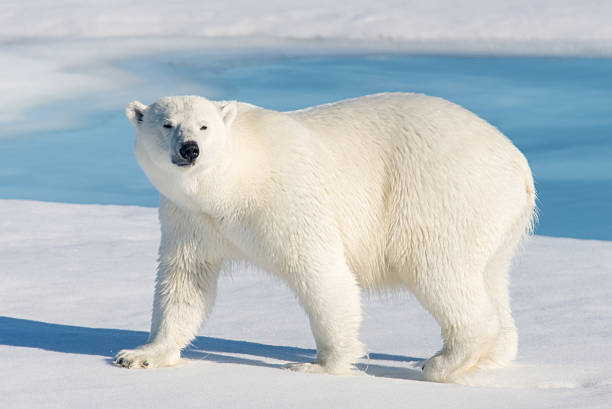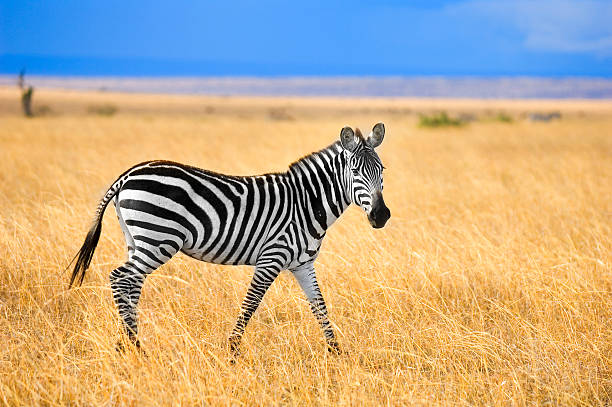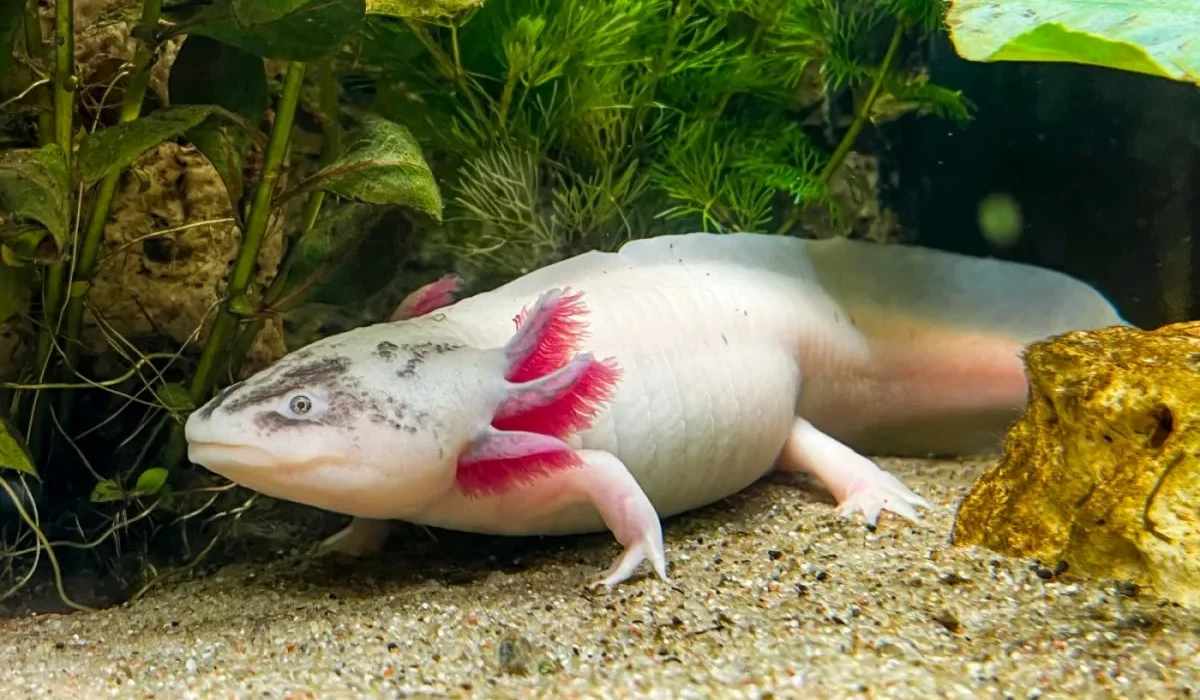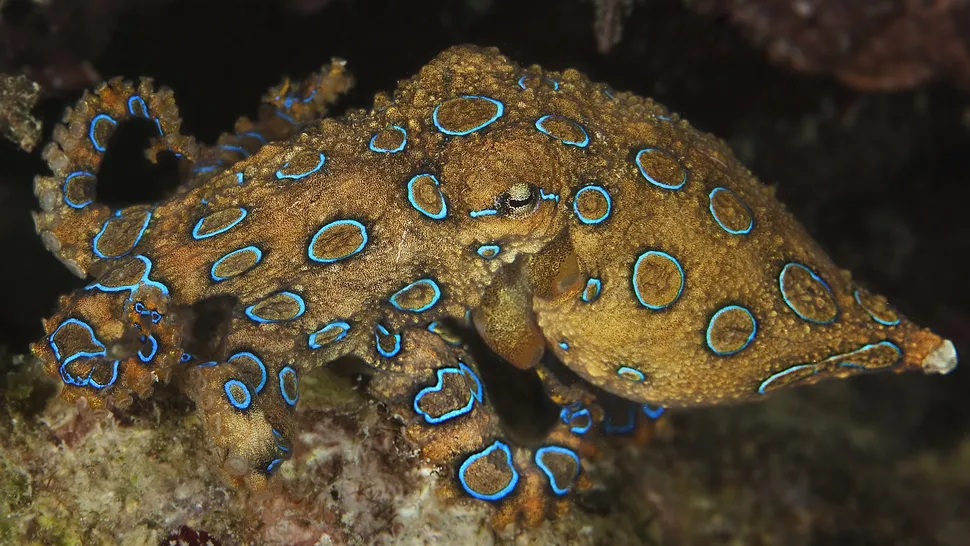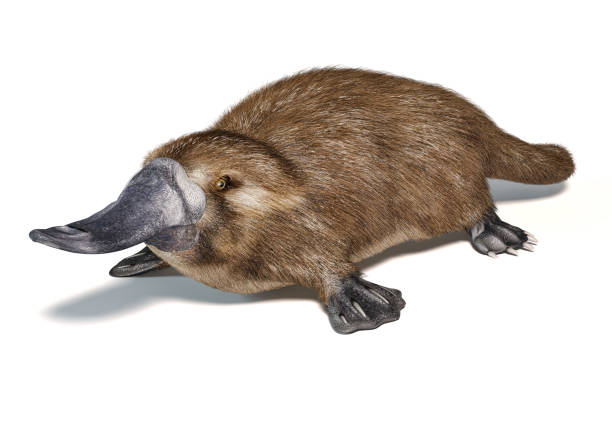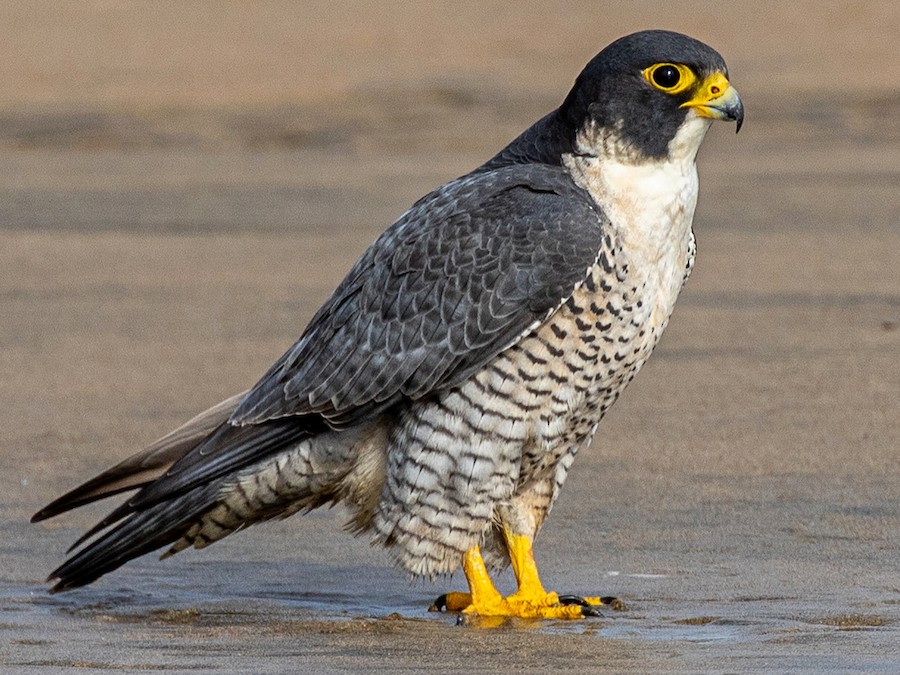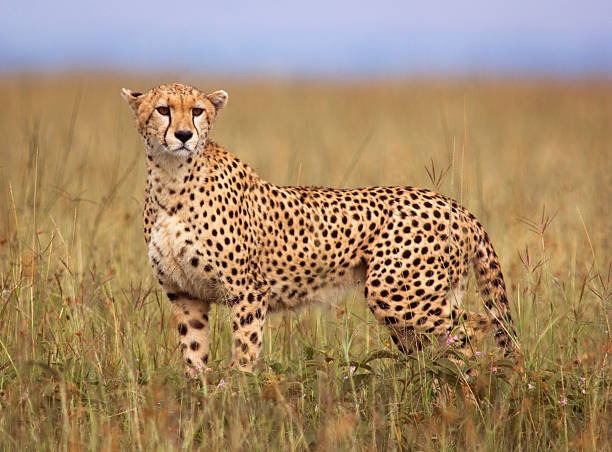The Arctic — a place where winter reigns most of the year, where temperatures plunge far below freezing, and where daylight and darkness trade places in months-long stretches. It is a world of extremes, both breathtaking and brutal, where only the most resilient creatures endure. Yet, in this frozen expanse of silence and snow, life not only exists but flourishes.
Here, survival is an art perfected through time. The Arctic’s inhabitants have evolved astonishing adaptations—fur that glows under infrared light, metabolisms that shift with the seasons, and instincts so refined they can sense prey beneath layers of ice. These animals are not merely survivors; they are masters of endurance, sculpted by the very challenges that might destroy lesser beings.
In this journey through the frostbitten North, we will meet ten extraordinary species that embody strength, intelligence, and grace. Each is a testament to nature’s genius—a living echo of the Arctic’s wild, white heart.
1. Polar Bear – The King of the Frozen Realm
The polar bear (Ursus maritimus) is more than an icon of the Arctic—it is its spirit made flesh. Towering at over 10 feet tall on hind legs and weighing as much as 1,600 pounds, the polar bear is both formidable and fragile, a creature perfectly adapted to the world of ice it depends upon.
Beneath its shimmering white fur lies black skin, designed to absorb and retain the faintest warmth from the sun. Each hair is transparent, scattering light to create the illusion of snow-white camouflage. Its thick layer of fat insulates it against temperatures that could freeze steel. Yet it is the polar bear’s patience and precision that make it the apex predator of the North.
It hunts primarily seals, waiting motionless by breathing holes for hours—sometimes days—until the faint sound of exhalation betrays its quarry. With a single strike, the bear’s massive paws can crush the skull of a seal, ensuring it the vital calories needed to endure the icy wasteland.
Despite its power, the polar bear faces an uncertain future. As sea ice melts earlier and forms later each year, its hunting grounds vanish. But even as the ice retreats, the polar bear remains a symbol of endurance—an embodiment of life’s will to persist in the face of change.
2. Arctic Fox – The Whisper of Winter
Small, elegant, and endlessly adaptable, the Arctic fox (Vulpes lagopus) is the quiet genius of the tundra. Where the polar bear rules with strength, the fox survives with cunning.
In the depths of winter, the Arctic fox’s coat turns pure white, allowing it to disappear against the snow. When summer arrives, it shifts to shades of brown and gray, blending seamlessly into the rocky tundra. Beneath that beautiful fur is an exceptional thermal system: tiny, fur-covered paws that tread lightly on ice, and a metabolism that adjusts with the seasons.
The fox’s hearing is so sharp it can detect the faint movements of lemmings tunneling under snow. It leaps high and dives nose-first into the drifts, emerging with its prey—a moment of life in a landscape of silence.
During the long winter months, the Arctic fox often follows polar bears, scavenging the remains of their hunts. In the leanest times, it caches food beneath the snow, remembering each location with uncanny precision.
But beyond its survival tactics lies a quiet beauty: Arctic fox pairs often mate for life, raising their young in cozy dens protected from the wind. In the desolation of the Arctic, their companionship is a reminder that warmth is not always a matter of temperature.
3. Narwhal – The Unicorn of the Sea
In the icy waters of the Arctic Ocean swims one of nature’s most mysterious beings—the narwhal (Monodon monoceros), the so-called “unicorn of the sea.” Its spiraling tusk, which can grow up to 10 feet long, inspired centuries of myth and wonder.
The tusk is not a horn but an elongated tooth, filled with millions of sensory nerve endings. Scientists believe narwhals use it to detect subtle changes in the water—temperature, pressure, and salinity—that help them navigate and locate prey beneath the ice.
Narwhals live in tight social pods, diving as deep as 1,500 meters to feed on fish, squid, and shrimp. These dives, performed in complete darkness and crushing pressure, reveal a physiological marvel: narwhals can slow their heart rate to conserve oxygen, allowing them to stay submerged for over 20 minutes.
Their world is one of sound. Narwhals communicate through clicks and whistles that bounce through the icy depths, creating a language we are only beginning to understand. To watch them glide beneath the frozen seas is to glimpse something ancient and otherworldly—a reminder that the Arctic’s magic is as much beneath the surface as above it.
4. Snowy Owl – The Silent Sentinel
With its luminous white plumage and golden eyes that pierce through twilight, the snowy owl (Bubo scandiacus) is the Arctic’s silent guardian.
Built for life on the tundra, snowy owls are powerful hunters. Their feathers provide unmatched insulation and soundless flight, enabling them to swoop upon prey undetected. They feed mainly on lemmings and small rodents, consuming up to 1,600 in a single breeding season to feed their chicks.
Unlike most owls, snowy owls are diurnal—they hunt during the endless daylight of Arctic summer. When the sun dips below the horizon in winter, many migrate southward, though some remain to face the darkness.
Their piercing call can travel miles across the tundra, yet their demeanor is calm and regal. A mating pair forms a partnership built on patience and protection, defending their nests fiercely against intruders, even humans.
The snowy owl’s presence in myth and literature symbolizes wisdom, solitude, and endurance. Watching one perched against the backdrop of endless white feels like meeting a piece of the Arctic’s soul—still, watchful, and utterly timeless.
5. Arctic Wolf – The Phantom of the North
If the Arctic had a heartbeat, it might sound like the call of the Arctic wolf (Canis lupus arctos), echoing across frozen valleys. Pale as the snow itself, this elusive predator is the northernmost subspecies of the gray wolf and one of the few to endure year-round in the harshest climates on Earth.
The Arctic wolf lives in tight-knit packs, often family groups led by an alpha pair. Their bonds are profound—strengthened by trust, cooperation, and communication. Together, they hunt musk oxen, Arctic hares, and caribou, often coordinating with remarkable intelligence.
Unlike their southern relatives, Arctic wolves face little human interference. Their isolation across the Canadian Archipelago and northern Greenland has preserved their ancient rhythms.
Their fur is shorter and denser than that of gray wolves, adapted for conserving heat, and their paws are padded to grip ice and snow. They can survive weeks without food, their metabolism slowing to conserve energy until a kill can be made.
In the eternal twilight of the Arctic winter, their glowing eyes are a haunting sight—symbols of strength and freedom, reminders that even in desolation, community and loyalty sustain life.
6. Beluga Whale – The Songbird of the Arctic Seas
If the narwhal is the Arctic’s unicorn, the beluga whale (Delphinapterus leucas) is its songbird. These ghostly white whales are renowned for their rich repertoire of whistles, clicks, and chirps—earning them the nickname “canaries of the sea.”
Belugas are deeply social, traveling in pods that communicate constantly. Their flexible necks, unusual among whales, allow them to nod, turn, and interact with expressive gestures, giving them a humanlike charm that has enchanted scientists and Arctic peoples alike.
Adapted to cold waters, belugas have thick layers of blubber and no dorsal fin, allowing them to navigate under sea ice. They feed on fish, crustaceans, and worms, often using echolocation to locate prey in the dark Arctic waters.
Their songs serve many purposes: navigation, hunting, social bonding, and perhaps even play. In the Arctic’s stillness, their melodies rise through the ice like poetry in motion.
Belugas also share a deep bond with Indigenous Arctic cultures, appearing in Inuit legends as protectors and guides. In their intelligence and gentleness, they embody the spirit of community that thrives even in the harshest conditions.
7. Musk Ox – The Ancient Warrior
The musk ox (Ovibos moschatus) looks like a relic from the Ice Age—and in many ways, it is. These massive, shaggy creatures have changed little since the Pleistocene, surviving side by side with mammoths and saber-toothed cats.
Their thick, two-layered coats are masterpieces of insulation. The outer layer, long and coarse, repels snow and wind, while the inner layer—called qiviut—is one of the warmest natural fibers on Earth, eight times warmer than wool.
When danger threatens, musk oxen form a defensive circle around their young, horns outward, presenting a united wall of strength. It’s a display of both intelligence and solidarity, a living fortress against wolves or Arctic storms.
They graze on tundra grasses, lichens, and mosses, often using their hooves to dig through snow to reach buried vegetation. Despite their size, they are surprisingly agile, able to navigate icy slopes and deep drifts with ease.
In the frozen silence of winter, the musk ox endures as a symbol of resilience—an ancient heartbeat that still echoes across the white plains of time.
8. Walrus – The Giant of the Ice
Lumbering yet majestic, the walrus (Odobenus rosmarus) is a creature of both brute strength and unexpected tenderness.
Weighing up to 3,000 pounds, with tusks that can exceed three feet, the walrus seems built for dominance. Yet those tusks are not weapons of war but tools of life—used to haul its bulk onto ice, break through breathing holes, and assert status within social groups.
Walruses are highly social animals, gathering in herds that can number in the thousands. They communicate through bellows, grunts, and claps of their flippers. Despite their size, they are graceful swimmers, capable of diving over 100 meters in search of clams and shellfish.
Their whiskers—vibrissae—are finely tuned sensors that detect movement and texture on the ocean floor, guiding them to buried prey even in total darkness.
The walrus’s world revolves around the ice. It is their platform for resting, breeding, and nurturing calves. As the Arctic warms, their struggle to find stable ice mirrors the greater story of change unfolding across the region. Still, the walrus endures—a symbol of power, adaptability, and the enduring rhythm of life.
9. Caribou (Reindeer) – The Nomad of the North
No animal embodies the spirit of movement like the caribou (Rangifer tarandus). These magnificent deer undertake one of the longest migrations on Earth, traveling up to 3,000 miles each year across the Arctic tundra.
Their journey is one of survival and synchronicity. They move with the seasons, chasing the green wave of fresh vegetation that ripples northward each spring. Along the way, they face predators, storms, and swollen rivers, yet their endurance never falters.
Caribou are perfectly designed for their environment. Their wide, concave hooves act like snowshoes, spreading their weight over soft snow and soggy tundra. Both males and females grow antlers—a rare trait among deer species—used for defense and foraging.
During the endless winter nights, herds cluster together for warmth, guided by instincts honed over millennia. When they finally reach calving grounds, the tundra blooms with new life—a moment of renewal in the Arctic’s eternal cycle.
To the Indigenous peoples of the North, the caribou is more than a symbol; it is a partner in survival. In its steady migration lies a lesson in endurance, community, and faith in the turning of the seasons.
10. Puffin – The Clown of the Cold Seas
Among the icy cliffs and coastal winds of the Arctic Circle lives one of the most charming birds on Earth—the puffin (Fratercula arctica). With its colorful beak and comical waddle, the puffin seems born from a child’s imagination, yet beneath its playful appearance lies an astonishingly capable survivor.
Puffins are expert divers, using their wings like flippers to “fly” underwater in pursuit of fish. They can dive more than 60 meters deep and carry up to a dozen fish in their beaks at once—thanks to a unique hinge mechanism that lets them grip multiple prey without dropping any.
They spend most of their lives at sea, returning to land only to breed. During nesting season, puffins form lifelong pairs, reuniting each year to raise a single chick, affectionately called a “puffling.” Together, they take turns feeding and guarding the nest, a touching display of devotion amid the wild coasts.
As summer ends, the Arctic sun fades, and the puffins vanish into the mist, heading out to sea for months of solitude. Their bright colors fade in winter, replaced by a sober gray—proof that even the most joyful creatures must adapt to the Arctic’s cycles of light and dark.
The Science of Survival
What unites these ten species is not just their home but their brilliance. Each has evolved to solve the same riddle: how to live where life should be impossible.
Their bodies are laboratories of adaptation. From the antifreeze proteins in Arctic fish to the slow, deliberate heartbeats of diving whales, evolution has turned the Arctic into a classroom of resilience. Even plants, lichens, and microorganisms participate in this symphony of survival, thriving in temperatures that would end most forms of life.
But beneath the scientific wonder lies an emotional truth. The Arctic’s animals teach us that survival is not about domination but balance—about harmony with forces far greater than ourselves.
The Fragile Future of the Arctic
As the planet warms, the Arctic is changing faster than anywhere else on Earth. Ice melts, seas rise, and ancient rhythms falter. Polar bears swim farther for food; walruses crowd onto shrinking shores; caribou struggle to find winter grazing grounds.
Yet, hope endures. Conservationists, scientists, and Indigenous communities are working tirelessly to protect this fragile world. The resilience that defines Arctic life may yet inspire humanity to adapt, to endure, and to heal what has been harmed.
The Last Light
In the Arctic, the line between life and silence is as thin as a snowflake. Yet, in that delicate balance, a fierce beauty thrives.
The animals of the Arctic are not simply survivors of cold—they are keepers of wisdom, guardians of endurance, and reminders of nature’s boundless creativity.
To look into the eyes of a polar bear, to hear the song of a beluga, or to watch a fox leap through the snow is to feel the pulse of an ancient truth: that life, no matter how cold or dark the night becomes, will always find a way to shine.
